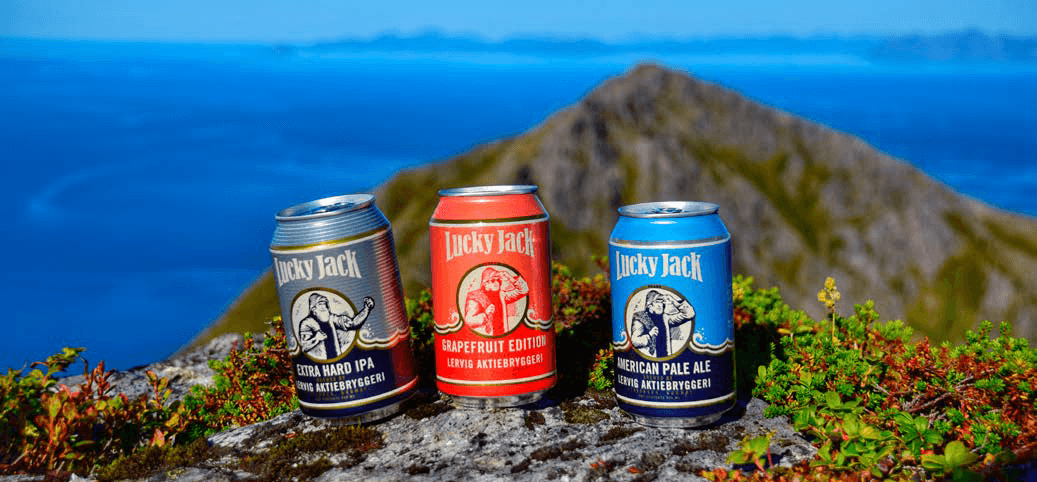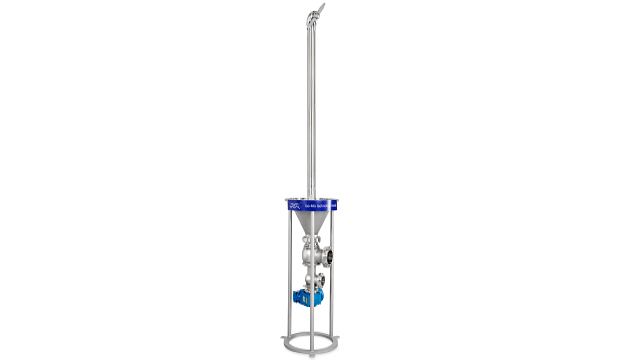Alfa Laval IMXD cuts hop residence time, hop dosing rates and beer losses
When Lervig ordered new fermentation and bright beer tanks to expand production capacity, the independent craft brewery decided it was time to purchase Alfa Laval Iso-Mix External Drive (IMXD) rotary jet mixers to enhance its dry hopping capabilities. The IMXD did not disappoint. The IMXD pulled more hoppy goodness out of the hops while reducing hop dosing rates, process time, and beer losses.
DATE 2023-11-28
Well-known in craft beer circles, Lervig focuses on pushing boundaries to produce an innovative range of beers – from traditional pilsners and pale ales to full-bodied barrel-aged stouts, barley wines and sours. Its pale ales are intensely hoppy, requiring the use of large quantities of American hops, which are among the most expensive. Through ongoing dialog with Alfa Laval, brewmaster Mike Murphy had expressed interest in testing the Alfa Laval IMXD. The plant expansion with four new fermentation tanks and two new bright beer tanks provided the right opportunity to do so.
Mike Murphy, Brewmaster, Lervig
Using the IMXD, we are able to improve the product recovery during centrifugation, and thereby reduce beer losses on heavily dry-hopped beers by as much as 40%. For our non dryhopped beers, we cut losses by over 50%.
If we can safely reduce the hops by 20%, then we expect payback on our investment in the IMXD after using it 30 times in each tank.
I’m impressed by the performance of the IMXD both in terms of hops reduction as well as its ability to push the hoppiness of the beer to higher levels, which is key to our craft, I’m equally impressed by the amount of beer recovered using the IMXD compared to the product losses in a tank that does not use the IMXD.
First brewery in Europe with Alfa Laval IMXD
Murphy was intrigued by the possibility of automating and scaling up the brewery’s dry hopping processes while ensuring high efficiency mixing, reducing hop retention time from days to hours, reducing beer losses and operating costs.
Based on the potential return on investment, Lervig decided to purchase Alfa Laval IMXD technology, though still in the prototype phase. In doing so, the Norwegian brewery became the first European site to embrace this simple, compact and highly effective dry hopping system. The IMXD minimizes oxygen pick-up, counters excessive extraction of the aroma compounds, greatly reduces product loss and enhances the Cleaning-in-Place (CIP) of the tank.
Efficient dry hopping and fast return on investment
Using the Alfa Laval IMXD, Lervig is able to cut dry hop dosing rates by about 20%, reduce hop residence time from three days to just five hours, and decreases product loss while still achieving the desired hop flavours. This contributes to Lervig realizing a return on its investment in the Alfa Laval IMXD in just two years.
IMXD versatility: Dry hopping, beer transfer, fermentation and cooling
The scope of supply included four complete IMXD units along with four easy-to-install, skid-mounted pump units with pump, variable frequency drive, valves and instruments for use as the circulation loops for the IMXD.
Lervig uses the IMXD system to optimize its dry hopping processes. During the dry hopping process, the IMXD efficiently disperses the hops throughout the beer for fast extraction of the hop aromas and flavours into the beer.
Lervig also uses the IMXD to maintain a homogeneous hop-beer suspension while transferring the dry-hopped beer downstream to centrifugation, where hop solids are separated from the beer. This improves performance and reduces product losses, which significantly cuts the volume of the hop residue waste stream and thereby the costs of disposal. In addition, the IMXD is also used to make the brewery’s fermentation, maturation and tank cooling processes more efficient.
Enhancements ahead
When asked what’s on the horizon, Murphy notes that dry-hopping at Lervig occurs every single day. He is considering replacing the brewery’s current dosing system with an Alfa Laval-designed pre-slurrying tank system to ensure gentle feeding of the hops into the IMXD. Murphy says, “Our current dosing units force a lot of CO2 pressure into the tank while feeding the hops into the IMXD. Gentle feeding would give us added control over crafting the beer.”

